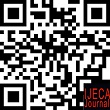Developing of Four-Tier Diganostic Test to Identify Test Profile on Acid and Base Materials
Abstract
Misconceptions that occur continuously and protracted can interfere with the learning process. Therefore, educators must be able to identify precisely the misconceptions that occur. This research was conducted to find out the implementation of four-tier diagnostic tests in analyzing the misconceptions of students in high school in North Aceh regency and understand the results of analysis of the comprehension level of learners' concepts, whether they Scientific conception, Lack of knowledge, and misconception. Four-tier diagnostic test instrument has been developed by adapting 4D models (Define, Design, Development and Disseminate). Through these steps, the four-tier diagnostic test instrument is produced that is valid through content validation with content-validity coefficient of 0.89 and an average aspect of 4.5 and includes an excellent category. On average, the overall profile of learners got 44.47% who Scientific conception, 44.03% Lack of knowledge and 11.50% who experienced misconceptions in acids and bases materials. The implication of this study is that educators can analyze scientific conception, lack of knowledge and misconceptions on acids and bases materials in learners, and use suitable learning methods so that the misconception is not repeated.
Keywords
Full Text:
DOWNLOAD [PDF]References
Abd-El-Khalick, F., & Akerson, V. (2009). The influence of metacognitive training on preservice elementary teachers’ conceptions of nature of science. International Journal of Science Education, 31(16), 2161–2184. https://doi.org/10.1080/09500690802563324
Aiken, L. R. (1985). Three Coefficients For Analyzing The Reliability And Validity of Ratings. Educational and Psychological Measurment, 45.
Bevir, M. (2003). Notes Toward an Analysis of Conceptual Change. Social Epistemology, 17(1), 55–63. https://doi.org/10.1080/0269112032000114831
Diani, R., Alfin, J., Anggraeni, Y. M., Mustari, M., & Fujiani, D. (2019). Four-Tier Diagnostic Test with Certainty of Response Index on the Concepts of Fluid. Journal of Physics: Conference Series, 1155(1). https://doi.org/10.1088/1742-6596/1155/1/012078
Eggen, P., & Kauchak, D. (2004). Educational Psychology: Windows, Classroom. Upper Saddle River: Pearson Prentice Hall.
Firdaus, A., Samhati, S., & Suyanto, E. (2014). Analisis Kelayakan Isi Buku Teks Bahasa Indonesia Terbitan Erlangga Kelas VII SMP/MTs. 1, 1–12.
Georghiades, P. (2000). Beyond conceptual change learning in science education: Focusing on transfer, durability and metacognition. Educational Research, 42(2), 119–139. https://doi.org/10.1080/001318800363773
Gurel, D. K., Eryilmaz, A., & McDermott, L. C. (2015). A review and comparison of diagnostic instruments to identify students’ misconceptions in science. Eurasia Journal of Mathematics, Science and Technology Education, 11(5), 989–1008. https://doi.org/10.12973/eurasia.2015.1369a
Jubaedah, D. S., Kaniawati, I., Suyana, I., Samsudin, A., & Suhendi, E. (2017). Pengembangan Tes Diagnostik Berformat Four-Tier Untuk Mengidentifikasi. Prosiding Seminar Nasional Fisika (E-Journal) SNF 2017, VI(October), 35–40.
Kang, S., Scharmann, L. C., & Noh, T. (2004). Reexamining the role of cognitive conflict in science concept learning. Research in Science Education, 34(1), 71–96. https://doi.org/10.1023/B:RISE.0000021001.77568.b3
Kartikasari, Y., Widodo, M., & Karomani. (2015). Kelayakan Isi Dan Bahasa Pada Buku Teks Bupena Bahasa Indonesia Kelas VII. Jurnal Kata (Bahasa, Sastra, Dan Pembelajarannya), 1–9.
Leach, J., & Scott, P. (2003). Individual and Sociocultural Views of Learning in Science Education. Science and Education, 12(1), 91–113. https://doi.org/10.1023/A:1022665519862
Lestari, D., Handayani, D., Darussyamsu, R., & Armen, A. (2019). Identification Students’ Misconceptions of Class VIII SMPN 21 Padang in the Skeletal Systems of Organism by Using CRI Technique. Jurnal Atrium Pendidikan Biologi, 4(1), 135. https://doi.org/10.24036/apb.v4i1.5470
Macbeth, D. (2000). On an actual apparatus for conceptual change. Science Education, 84(2), 228–264. https://doi.org/10.1002/(SICI)1098-237X(200003)84:2<228::AID-SCE6>3.0.CO;2-3
Martin, R., Sexton, C., Franklin, T., Gerlovich, J., & McElroy, D. (2002). Teaching Science for all Children: Methods for Conctructing Understanding. Allyn and Bacon.
McDermott, L. C. (2006). Preparing K-12 teachers in physics: Insights from history, experience, and research. American Journal of Physics, 74(9), 758–762. https://doi.org/10.1119/1.2209243
Mudau, A. V. (2013). Teaching Difficulties from Interactions and Discourse in a Science Classroom. Journal of Educational and Social Research, 3(3), 113–120. https://doi.org/10.5901/jesr.2013.v4n3p113
Novick, S., & Nussbaum, J. (1981). Pupils’ understanding of the particulate nature of matter: A cross‐age study. Science Education, 65(2), 187–196. https://doi.org/10.1002/sce.3730650209
Qurrota, A., & Nuswowati, M. (2018). Analisis Miskonsepsi Siswa Menggunakan Tes Diagnostic Multiple Choice Berbantuan Cri (Certainty of Response Index). Jurnal Inovasi Pendidikan Kimia, 12(1), 2108–2117.
Suparno. (2013). Miskonsepsi dan Perubahan Konsep Pendidikan Fisik. Grafindo.
Suwarto. (2013). Pengembangan tes diagnostik dalam pembelajaran. Grafindo.
Venville, G. (2004). Young children learning about living things: A case study of conceptual change from ontological and social perspectives. Journal of Research in Science Teaching, 41(5), 449–480. https://doi.org/10.1002/tea.20011
Wardany, K., & Anjarwati, S. (2020). Kelayakan Instrumen Penilaian Higher Order Thinking Skills pada Materi Lingkungan. IISEJ : Ndonesian Science Education Journal, 1(3), 226–237.
Wilantika, N., Khoiri, N., & Hidayat, S. (2018). Pengembangan Penyusunan Instrumen Four-Tier Diagnostic Test Untuk Mengungkap Miskonsepsi Materi Sistem Ekskresi Di SMA Negeri 1 Mayong Jepara. Jurnal Phenomenon, 08(2), 200–214.
DOI: https://doi.org/10.31764/ijeca.v5i1.6359
Refbacks
- There are currently no refbacks.
Copyright (c) 2022 Isna Rezkia Lukman, Ratna Unaida, Fakhrah Fakhrah

This work is licensed under a Creative Commons Attribution-ShareAlike 4.0 International License.
IJECA (International Journal of Education and Curriculum Application) already indexed:










___________________________________________________________________
| |
____________________________________________________________________
IJECA Publisher Office:







.jpg)




